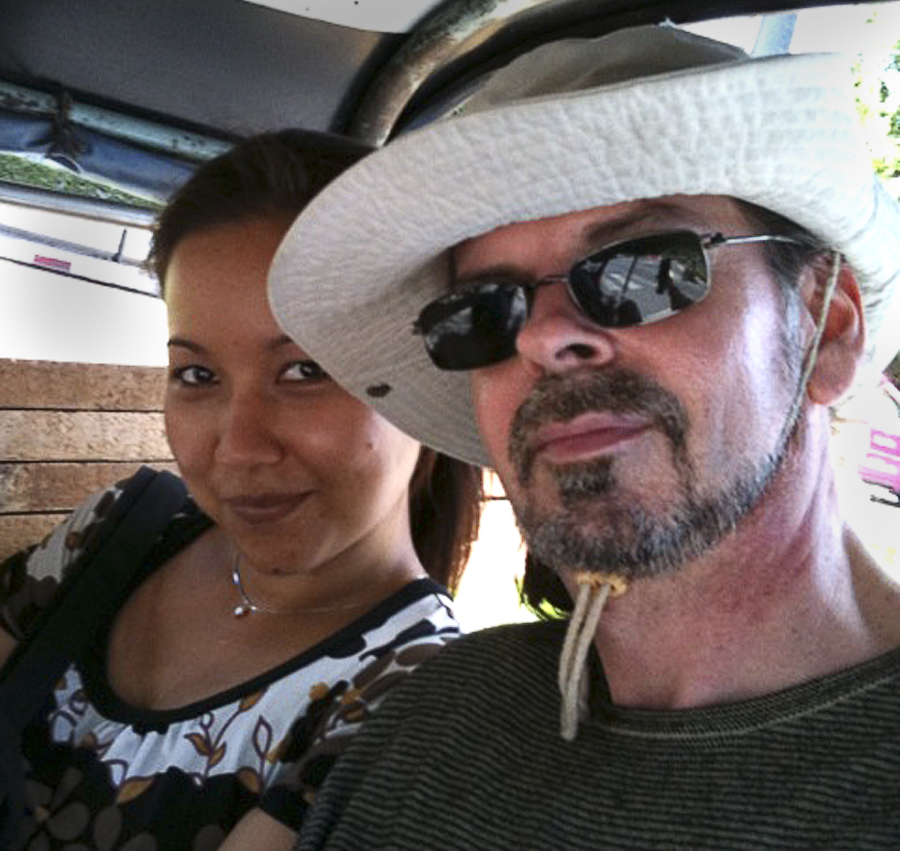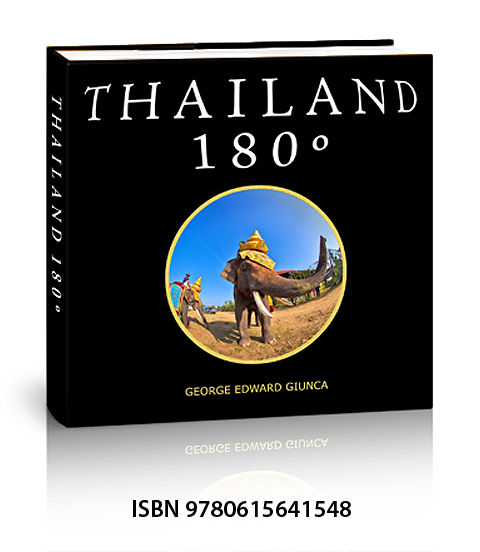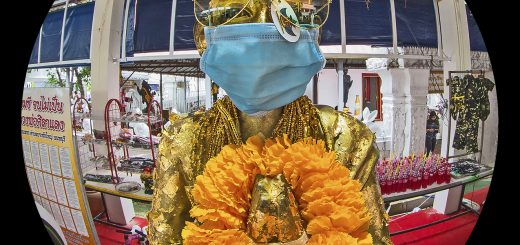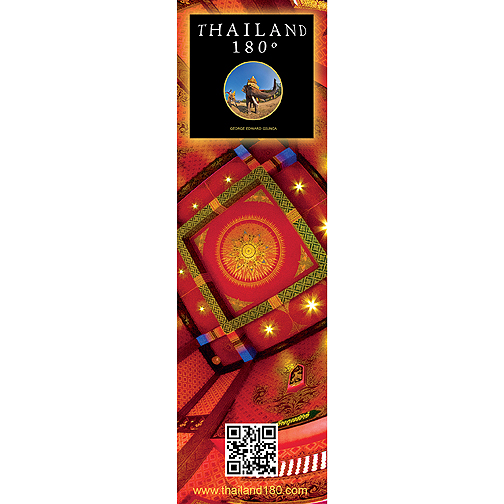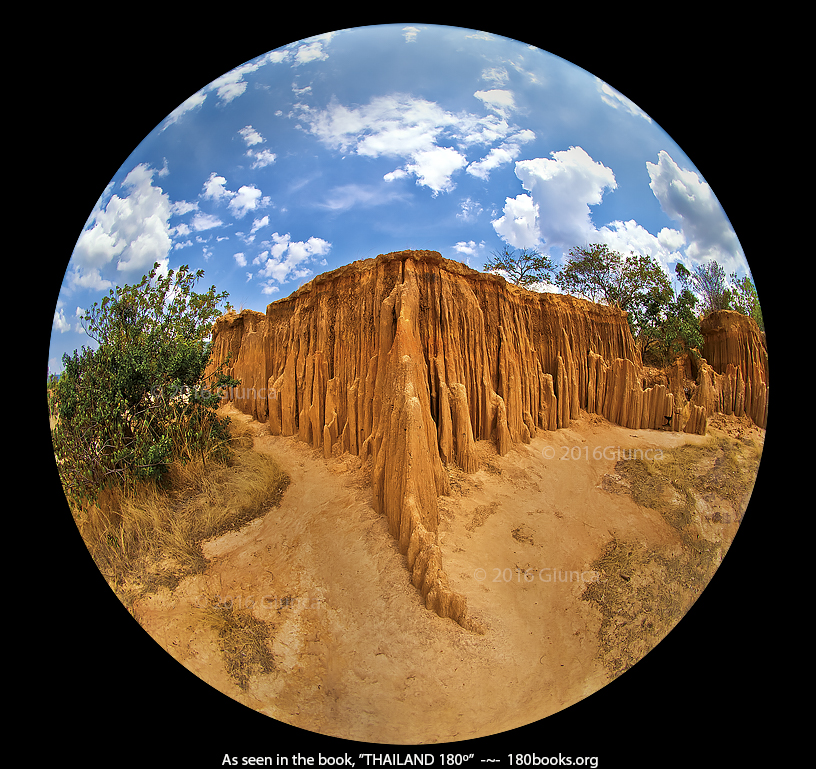Silver, Silver, and Silver on Wualai Road in Chiang Mai: เงิน-เงิน-เงิน ณ ถนนวัวลาย
Lanna Silversmith Community: ชุมชนหัตถกรรมเครื่องเงิน
At the beginning of the Lanna empire, King Mengrai built Chiang Mai to be its center. The city thrived and he was a much beloved king. Tragically, he was struck by lightning and died in 1317. Centuries later the Burmese army attacked, colonized Lanna, and held it captive for nearly 200 years. It was not until King Kawila of the Lanna royal bloodline teamed up with King Taksin’s army to return freedom to Lanna. As King Kawila rebuilt the empire, he further expunged the remaining Burmese soldiers and gathered up the Lanna people who were living on both sides of the Burma/Lanna border and proceeded to rebuild the empire. He was careful to hand-pick craftsmen of all kinds and they settled in the region that is present-day Chiang Mai.
This was the origin of the silver craftsmen on Wua Lai Road. The best of these silversmiths were chosen to work at the palace to craft silverware, jewelry and other furnishings. To this day, they are the largest group of silversmiths in Chiang Mai. As we walked through the community on the way to Wat Srisuphan, we could hear the hammering of silver being crafted emerging from almost every shop. From one shop, we heard bluegrass music along with the steady beat of a hammer and decided to stop and chat with the owner. He showed us some of their award-winning designs and talked about their work. It seems they supply customers as far away as Isaan with fashion accessories and make lanterns for temples in Chiang Rai. Today, Wua Lai Road is the most famous silver crafting area in the north of Thailand.
หลังจากอาณาจักรล้านนาอันยิ่งใหญ่ตกอยู่ภายใต้การปกครองของพม่ามานานถึง ๒๐๐ กว่าปี จนกระทั่งมาถึงสมัยพระเจ้ากาวิละ ได้ร่วมกับกองทัพพระเจ้ากรุงธนบุรีกอบกู้อิสรภาพได้ในปี พ.ศ. ๒๓๑๗ แล้วล้านนาจึงได้มาเป็นเมืองประเทศราชของกรุงธนบุรี พระเจ้ากาวิละได้ขยายแผ่นดินอาณาจักรล้านนาฟื้นม่านเมืองเชียงใหม่ กำจัดอำนาจพม่า สร้างล้านนาให้เข้มแข็ง เป็นยุคเก็บผักใส่ซ้าเก็บข้าใส่เมือง คือ กวาดต้อนผู้คนกลุ่มชาติพันธุ์ต่างๆ เข้ามาอาศัยอยู่รอบเมืองเชียงใหม่ ก่อเกิดเป็นชุมชนต่างๆ รอบเมืองเชียงใหม่มาจนถึงปัจจุบัน
ถนนวัวลาย เป็นถนนสายหนึ่งที่มีการตั้งถิ่นฐานของกลุ่มชนจากหมู่บ้านงัวลาย ประเทศเมียนมาร์ ที่มีทักษะความชำนาญในการทำเครื่องเงินมาจากบรรพบุรุษ มีฝีมือดีเป็นที่เลื่องลือจนหลายคนได้เป็นช่างเงินประจำคุ้มหลวง ทำสลุง หีบบุหรี่ ช้อนส้อม ถาด พาน รวมถึงเครื่องประดับต่าง ๆ เช่น สร้อยข้อมือ สร้อยคอ ต่างหู กำไล แหวน เข็มขัด เข็มกลัด ฯลฯ และกลายมาเป็นชุมชนทำเครื่องเงินที่ใหญ่ที่สุดในเชียงใหม่
เสียงตอกเครื่องเงิน ผสานกับเสียงแบนโจ แนวบลูกราส แว่วมาตามลมขณะที่เราเดินมาถึงหน้าวัดศรีสุพรรณ จึงได้มีโอกาสสนทนาและถ่ายภาพช่างเงินบ้านพ่อหนานเลี่ยม ที่เคยชนะการประกวดสินค้าโอท็อป (OTOP) ประเภทเครื่องประดับเงินสำหรับตบแต่งบ้านและอาคารสถาน ทั้งในระดับอำเภอและจังหวัด มีงานรับสั่งทำจากทั่วประเทศมากมาย

Silver craftsman at Baan Pho Naan Liam (Image from the 180books.org Photo Collection by George Edward Giunca)
Wat Sri Suphan’s Silver Ubosot: อุโบสถเงิน วัดศรีสุพรรณ
The nearby temple Wat Srisuphan is more than 500 years old. In 2004 CE, the silversmiths spent 12 years remodeling on the temple ubosote as a lasting achievement of their craft. They used primarily aluminum and in some cases silver to embellish it inside and out. This temple is one of those places where you can spend hours walking around and still be rewarded with sightings of new designs. Within the artwork are examples of Buddhist, Hindu, Lanna, and Burmese-inspired art, as well as some contemporary themes. Unfortunately, women are not allowed to enter the ubosote, due to Lanna’s beliefs that they will deactivate the magic of the talesmen buried beneath the ubosote. However, there are no prohibitions about taking photos, so I entered and took the photo below of the interior. The Buddha image installed in the temple in the 16th century has a bullet hole on the foot from the Japanese army invasion of Thailand during World War II.
ชื่อเสียงช่างเงินคุ้มหลวง สืบสานมาสู่ยุคของถนนสายเครื่องเงิน จนถึงศรัทธาอันแรงกล้าของเหล่าสล่าเพื่อฝากศิลป์แก่แผ่นดินล้านนา ร่วมสร้างอุโบสถเงินวัดศรีสุพรรณกว่า ๑๒ ปี จึงเสร็จสมบูรณ์
วัดศรีสุพรรณ อายุกว่า ๕๐๐ ปี เดิมชื่อ “ศรีสุพรรณอาราม” เป็นศูนย์กลางชุมชน สืบทอดมรดกภูมิปัญญาชาวบ้านหัตถกรรมเครื่องเงินจากบรรพบุรุษ และเมื่อปี พ.ศ. ๒๕๔๗ ชาวชุมชนวัดศรีสุพรรณได้ร่วมกันสร้างพระอุโบสถเงินหลังแรกของโลก โดยสร้างบนฐานพระอุโบสถหลังเดิมที่ชำรุดทรุดโทรม ไม่สะดวกในการประกอบศาสนกิจ สล่าและชาวชุมชนจึงร่วมกันสร้างสรรค์ผลงานขึ้นรูป แกะลาย ดุนลายนูนสูง สลักเสลาลงบนวัสดุอะลูมิเนียม, เงินผสม, และใช้เงินบริสุทธิ์บางแห่งเพื่อความปลอดภัย ประดับตกแต่งทั้งภายนอกและภายในพระอุโบสถ ค่อยๆ เดินพินิจพิศชมโดยรอบภายนอกพระอุโบสถแล้วตะลึงในฝีมืองานดุนลายระดับเทพ งานละเอียด ประณีต วิจิตรพิสดาร อลังการมากจนนึกหาคำบรรยายไม่ถูก จึงอยากจะเข้าชมภายในซะแล้วสิ … แต่ห้ามสตรีย่างเข้าในพื้นที่พระอุโบสถแห่งนี้ เนื่องจากตามความเชื่อแบบล้านนา หากสถานที่สำคัญมีของศักดิ์สิทธิ์หรือ/และอาคมต่างๆ ฝังอยู่ภายใต้ฐานของสถานที่นั้นจึงมิใช่เขตที่สตรีจะเหยียบย่างเข้าไปให้อาคมเสื่อมและไม่ดีแก่สตรีนั้นเอง จึงกราบสักการะด้วยใจศรัทธาอยู่ภายนอก คุณเอ็ดจึงเข้าไปเก็บภาพภายในด้วยเลนส์ circular fisheye แบบ 180º มาให้ชม ภายในพระอุโบสเงินเป็นที่ประดิษฐานพระเจ้าเจ็ดตื้อ พระพุทธรูปปางมารวิชัย ซึ่งพระเมืองแก้ว กษัตริย์แห่งราชวงศ์มังราย โปรดเกล้าฯ ให้นำมาประดิษฐานและสร้างวัดในราวพ.ศ. ๒๐๔๓ และทำพิธีผูกพัทธสีมาเมื่อพ.ศ. ๒๐๕๒

Ubosote of Silver Temple or Wat Sri Suphan in Chaing Mai, Thailand (Image from the 180books.org Photo Collection by George Edward Giunca)
The Wualaisilpa Shop
After taking a self-guided cultural walk, we stopped by the Wualaisilpa shop where the smiths were busy working on their crafts. This shop is a household business that dates back to the 18th century when their ancestors, who were the best in silversmiths in the Shan State, Myanmar, were brought to settle in Chiang Mai. As Fon researched further, she found that Mong Pan or Miang Pan, မိုင်းပန်မြို့ (In Burmese script) is in the south of the Shan State and borders Mae Hong Son and Chiang Mai.
เดินชมเครื่องเงินบ้านวัวลายมาเรื่อยๆ จนถึงร้านวัวลายศิลป์ ที่สืบทอดภูมิปัญญาจากรุ่นสู่รุ่น สมาชิกในครอบครัวเติบโตมากับเสียงตอกเครื่องเงิน ในอดีตมีถิ่นฐานอยู่ในหมู่บ้านงัวลาย รัฐฉาน ประเทศเมียนมาร์ เมื่อโยกย้ายถิ่นฐานมาอาศัยที่นี่ก็ยังคงเรียกชื่อหมู่บ้านงัวลายตามเดิม หลายเว็บหลายตำราภาษาไทยกล่าวถึง “เมืองปั่น” ที่หมู่บ้านงัวลายตั้งอยู่ แต่จริงๆ แล้วนั้น ฝนทำการศึกษาค้นข้อมูลพบว่าเป็นเขตเมืองชื่อ “เมิงปัน” (Mong Pan) หรือบางทีก็สะกดว่า Miang Pan “เมียงปัน” မိုင်းပန်မြို့ ตั้งอยู่ทางฝั่งทิศตะวันตกของแม่น้ำสาละวิน เหนือจังหวัดแม่ฮ่องสอนและเชียงใหม่ ซึ่งข้อมูลนี้สอดคล้องกับที่ฝนสอบถามพูดคุยกับชาวชุมชนบ้านวัวลาย ขออภัยที่ต้องลงรายละเอียดลึกนิดนึง เพราะพอมีคำถามเกิดขึ้นในใจแล้ว มันเลยต้องหาคำตอบให้ถึงที่สุด ไม่ชอบลอกเลียนคำตอบของคนอื่นๆ ตามที่ได้ร่ำเรียนมาทางสังคมวิทยาและการวิจัยชุมชน จึงขอเผยแผ่ข้อมูลที่ค้นพบในครั้งนี้เพื่อเป็นวิทยาทานแก่ท่านทั้งหลายโดยเฉพาะผู้ที่ทำงานวิจัยด้วยนะคะ

Silver Bowls at Wualaisilpa Shop on on Wualai Road in Chiang Mai, Thailand (Image from the 180books.org Photo Collection by George Edward Giunca)
When you have a chance to visit Chiang Mai, be sure to visit the Wualaisilpa Shop to see their traditional silversmith crafting. They are very friendly and love to show and explain their crafts. Every part of the shop either contains their finished work or artisans working on different stages of production. The typical patterns of Lanna silversmiths are the 12 zodiac signs and local flowers.
The silver bowl is a must have possession in every Lanna house because the Lanna people use it on auspicious days, special traditional occasions and ceremonies. Nowadays, another favorite household decoration is an art piece to decorate the walls or lanterns, makeup tables, tissue boxes, etc. as well as the jewelry. The pieces are very detailed, and the work requires a mix of mindfulness, patience, and profession grade skill. Thais and International tourists alike have a high regard for Lanna silversmith craftsmanship and their work is renowned throughout the world.
ร้านวัวลายศิลป์ เปิดให้ลูกค้าและนักท่องเที่ยวเข้าชมกรรมวิธีการทำเครื่องเงินล้านนา ตั้งแต่หลอมเม็ดเงินในเตาเส่า ตีแผ่นเงินออก ขึ้นรูปทรง ตอกลวดลายหรือดุนลาย และขัดเงาจนเป็นชิ้นสำเร็จ งานดุนลายเครื่องเงินล้านนา ส่วนใหญ่จะเป็นลายสิบสองนักษัตร และลายธรรมชาติ อย่างเช่น ดอกพ่าย ดอกพุดตาน ลายดอกหมาก ลายดอกกระถิน เป็นต้น
ส่วนใหญ่เครื่องเงินเป็นที่นิยมใช้ในชีวิตประจำวัน โดยเฉพาะสลุงหรือขัน แทบทุกบ้านของชาวล้านนาต้องมีเก็บไว้ในตู้ เมื่อถึงคราวมีงานประเพณีหรือพิธีกรรมสำคัญก็จะนำออกมาใช้ ปัจจุบันยังมีผู้สั่งทำสลุงลายโบราณอยู่เป็นเนืองนิจ สำหรับงานอีกประเภทหนึ่งที่มีความนิยมมากเช่นกัน คือ เครื่องประดับตบแต่งบ้านและอาคารสถาน เช่น ชิ้นงานประดับผนัง, ตุง, โคมไฟ, คันฉ่อง … อาจจะมองว่างานประดับอาคารคงมีลายไม่ละเอียดเท่าไรนัก แต่ความประณีตงดงามมิได้ด้อยไปกว่าสลุงหรือเครื่องประดับเลยแม้แต่น้อย เครื่องเงินแต่ละชิ้นล้วนเป็นงานที่ทำด้วยมือ ใส่ความตั้งใจ ใช้ความอุตสาหะ มีความชำนาญ จนมาเป็นเครื่องเงินล้านนา ตรึงตาตรึงใจทั้งชาวไทยและชาวต่างชาติ ส่งออกไปสร้างชื่อเสียงและภาพลักษณ์ของประเทศไทยทั้งในทวีปเอเชีย ยุโรป และอเมริกา ด้วยฝีมือของสล่าแห่งล้านนานี้เอง

A Spectacular Silver Purse at Wualaisilpa Shop in Chiang Mai, Thailand (Image from the 180books.org Photo Collection by George Edward Giunca)
While I can appreciate all of the crafted silver pieces, the purses are standouts. They are sold by weight, and although they are pricey, they are sure to become family heirlooms and treasured for many generations. Fon loved the purse above *sigh*, so I guess it will be her’s someday soon.
ใบนี้งามแต้งามว่า งามปะล้ำปะเหลือ อยากจะได้สักใบ!!!
ขอบพระคุณ: ร้านวัวลายศิลป์ และ บ้านพ่อหนานเลี่ยม ที่เอื้อเฟื้อให้ข้อมูลและถ่ายภาพ
เที่ยวเมืองไทย ยิ้มสุขใจ ค้นหาสิ่งแปลกใหม่ ชื่นชมความสวยงาม เปิดใจและโลกทัศน์ให้กว้างงงงงงงงง… พบกันใหม่บล๊อกหน้าค่ะ
!!..คลิ๊กแผนที่..!! ดูภาพสวยๆ อ่านบล็อกสถานที่ท่องเที่ยวจาก THAILAND 180º ได้นะคะ อัพเดทเพิ่มเติมตลอดค่ะ
We had to eliminate the ability to comment from this wordpress site due to excessive spam. If you enjoyed this story, subscribe using the “Subscribe” button below, or visit our facebook fan page to comment Here
We’d LOVE to hear from you!
ผู้ติดตามอ่านบล็อก สามารถติดตามอัพเดทโพสต์บล็อกได้โดยสมัครสมาชิกที่บล็อกนี้ หรือ กดไลค์เฟสบุ๊คเพจของเราที่นี่ Here
Blog : Thai by Apisatha Giunca
Blog : English by George Edward Giunca
About the Authors
Photographer George Edward Giunca, and his Thai wife, Apisatha, have traveled around Thailand armed with a circular fisheye lens to create a photo essay on the rich cultural diversity, and abundant natural beauty of the Kingdom of Thailand. Fleeing from angry water buffaloes, slapping huge mosquitoes, watching exotic festivals and religious rituals, gorging on delicious spicy food, applying aloe vera cream to sunburned skin, wading through rice paddies, getting drenched to the bone by heavy monsoon rains, and gawking at breath-taking scenery; made it a journey of epic proportions! The result is the book, THAILAND 180º. Later, they traveled extensively through Myanmar, Malaysia, and India, gathering a massive collection of 180º photos. They currently live in Chiang Mai where they continue to blog and are now working on a CHIANG MAI 180º book.
Please Note: The photos in this article do not appear in this edition of THAILAND 180º
Here’s How to Order Your Copy of THAILAND 180º Collectors EditionToday!
In Thailand —>>>http://www.thailand180.com/thaiorder.html
The Rest of the world: We are offering our book on Amazon.com, below list price and I’ll pay for the shipping within the United States! http://amzn.to/1knDPRR
Not Familiar with Our Book???
This show details the origin of 180 Books, a series of art/travel books illustrated with a circular fisheye lens. By using infographics, pictures from our THAILAND 180º book, and never seen before images from our vault, we’ll demonstrate this unique lens and present our unique books.
Also, because there’s nothing to watch on TV, here’s a trailer about our book, “THAILAND 180”
Above is an interactive map of Thailand. If you click on a marker it reveals a photo from our THAILAND 180º book and a link to our blog article about the photo. Go Ahead~ Start Exploring ~Have Some Fun!


